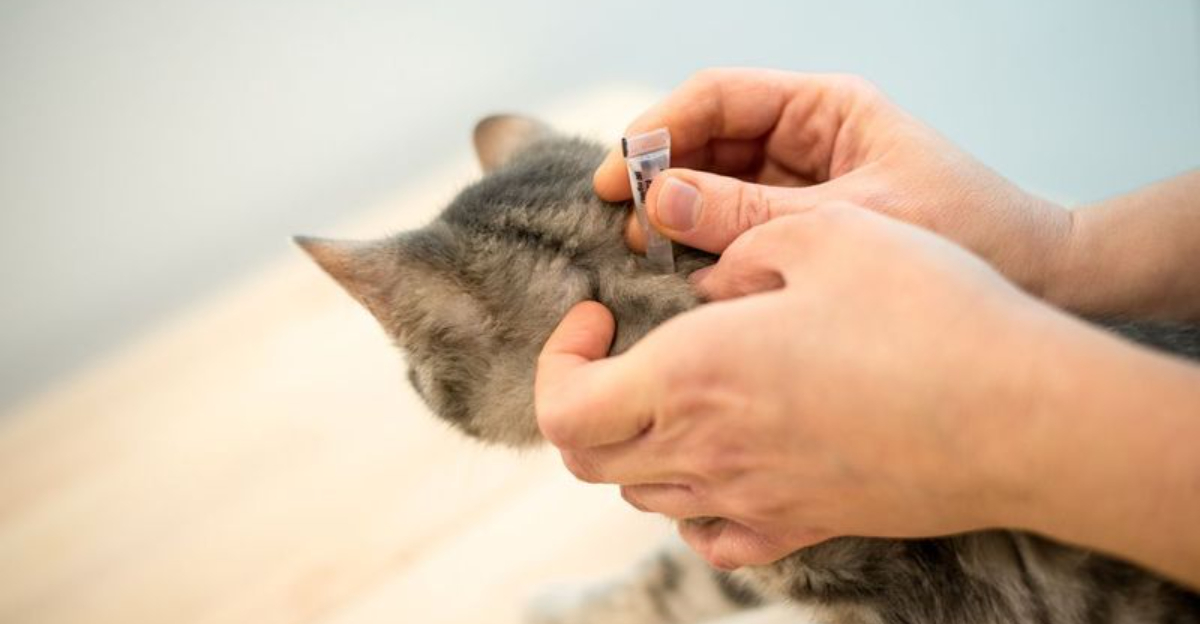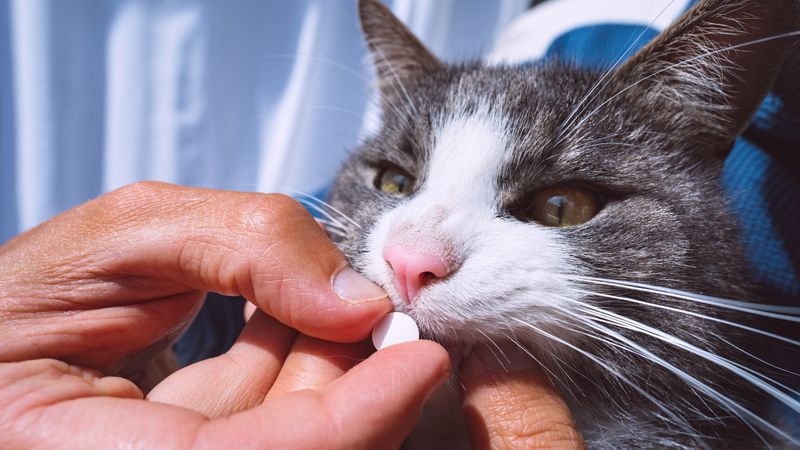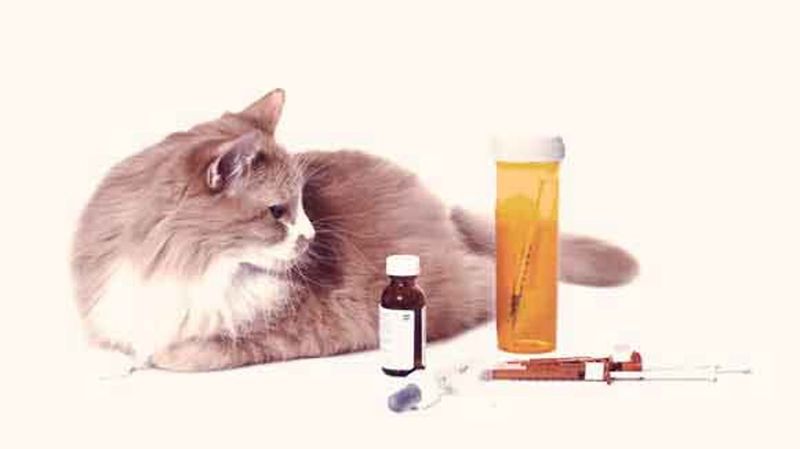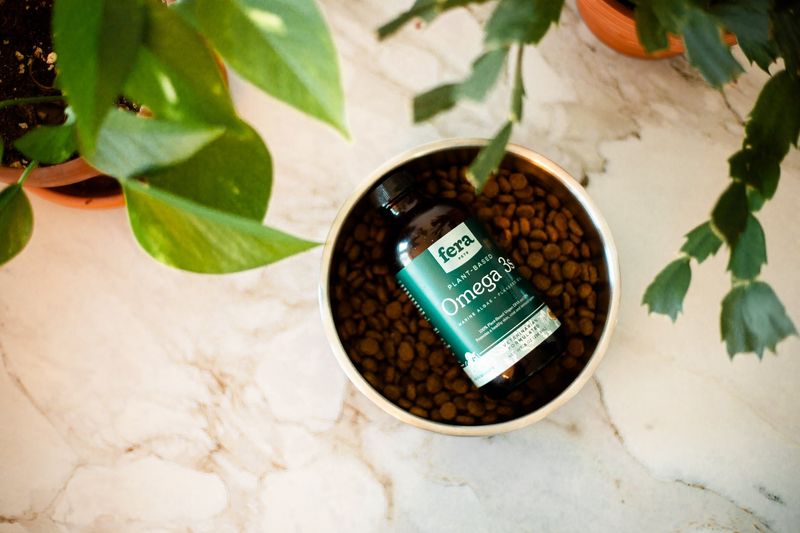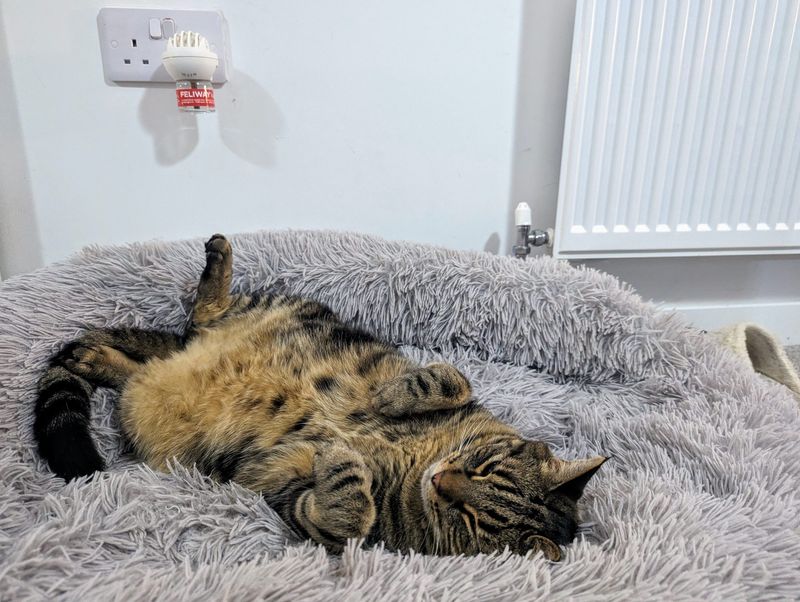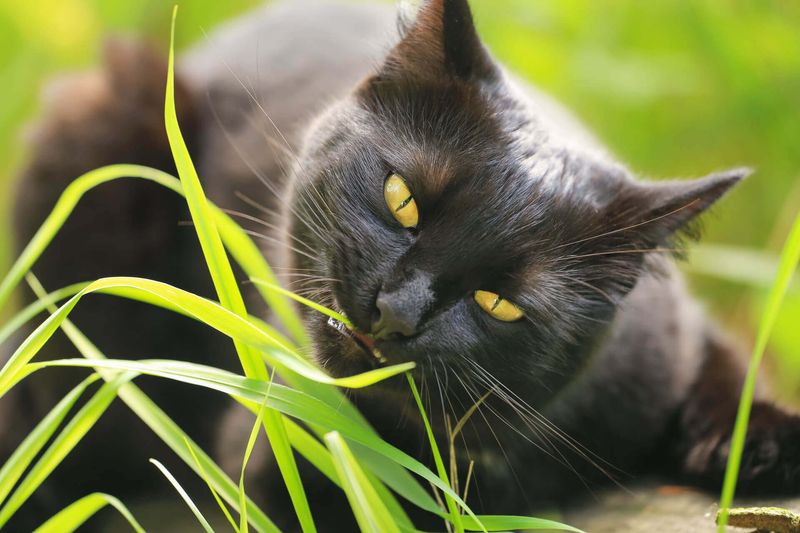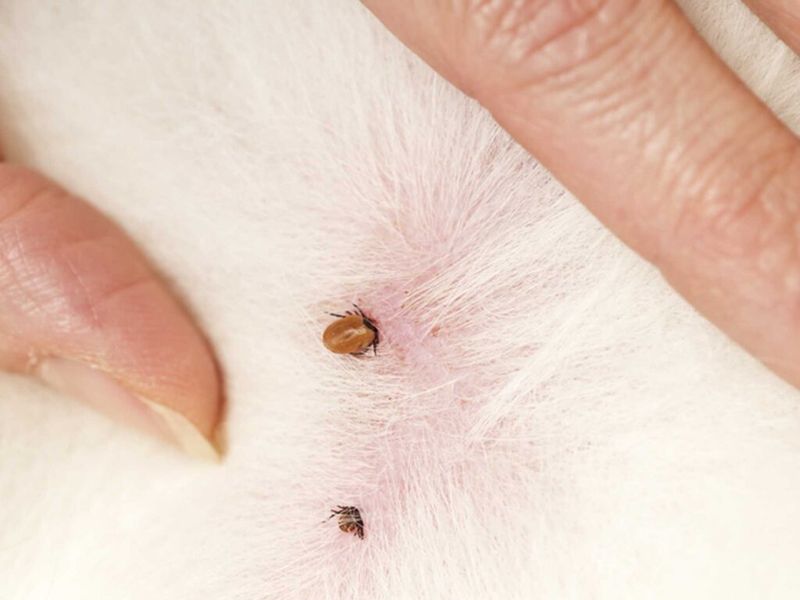📖 Table of Content:
- 1. Antibiotic Therapy
- 2. Anti-Inflammatory Medications
- 3. Pain Relief Support
- 4. Nutritional Support
- 5. Hydration Therapy
- 6. Probiotics
- 7. Immune-Boosting Supplements
- 8. Regular Monitoring and Follow-ups
- 9. Comfort and Stress Reduction
- 10. Alternative Therapies (with vet approval)
- 11. Consistent Tick Prevention Products
- 12. Limit Outdoor Exposure During Tick Season
- 13. Perform Routine Tick Checks
- 14. Maintain a Tick-Free Home and Yard
Lyme disease may be more commonly associated with dogs and humans, but cats aren’t entirely off the hook. Although it’s rarer, cats can still be affected by this tick-borne illness, especially if they roam outdoors or live in high-risk areas. Caused by the Borrelia burgdorferi bacteria and transmitted through the bite of infected ticks, Lyme disease can lead to a range of uncomfortable and potentially serious symptoms—from lethargy and fever to painful joints and mobility issues.
Diagnosing Lyme disease in cats can be tricky, as symptoms are often subtle or mistaken for other conditions. Early detection and prompt treatment are key to preventing long-term complications. Fortunately, there are several effective options available to help your feline recover if they’re diagnosed, including antibiotics, pain relief, and supportive care. In more severe cases, treatment may involve hospitalization or long-term management strategies, depending on how far the disease has progressed.
Of course, the best approach to Lyme disease is avoiding it altogether. With a few smart, proactive steps, you can significantly reduce your cat’s chances of contracting the illness in the first place. In this guide, we’ll walk you through 10 proven ways to treat Lyme disease in cats and 4 simple yet powerful strategies to prevent it—so you can protect your furry friend’s health now and in the future.
1. Antibiotic Therapy
Doxycycline is a frontline antibiotic used to combat the Borrelia burgdorferi bacteria responsible for Lyme disease in cats. This medication helps in halting the spread of infection and alleviating symptoms. Administered under veterinary guidance, it is crucial to complete the entire course to prevent resistance. Cats might require supportive care during treatment, and a vet will monitor progress, adjusting dosages as needed. Consistent medication timing enhances efficacy. Always follow your veterinarian’s instructions for the best outcome. Antibiotics can sometimes upset a cat’s stomach, so providing small meals may help ease any discomfort.
2. Anti-Inflammatory Medications
Non-steroidal anti-inflammatory drugs (NSAIDs) provide relief by reducing joint pain and swelling in cats with Lyme disease. These medications help enhance mobility and comfort, allowing your feline to engage more in daily activities. It’s essential to administer these under vet supervision to avoid side effects. Cats often respond well to NSAIDs, but regular check-ups are necessary to monitor their response and adjust doses if needed. Discuss potential interactions with other medications your cat may be taking. A cozy resting space can complement the effects, promoting relaxation and recovery.
3. Pain Relief Support
Cats experiencing severe discomfort from Lyme disease may benefit from additional pain relief medications. These are prescribed by a veterinarian to enhance quality of life, allowing cats to move and rest without distress. Discuss with your vet about the best pain management plan tailored to your cat’s specific needs. This might include mild analgesics that are safe for feline use. Creating a soothing environment at home can further alleviate stress and pain, supporting overall well-being. Soft bedding, warm lighting, and gentle handling contribute to a cat’s comfort during recovery.
4. Nutritional Support
A high-quality, protein-rich diet is essential for cats recovering from Lyme disease. It boosts energy and supports the immune system, especially when appetite is affected by illness. Choose foods with natural ingredients that provide balanced nutrition. Consult your vet for dietary recommendations specific to your cat’s health needs. Sometimes, supplements may be advised to address deficiencies. Regular feeding schedules and small, appetizing meals encourage consumption and aid digestion. Keep fresh water available at all times to support hydration and overall health.
5. Hydration Therapy
Cats with Lyme disease may become dehydrated, especially if they’ve had a fever or poor appetite. In moderate to severe cases, your vet may administer fluids subcutaneously or intravenously. Hydration therapy helps flush toxins from the body and supports kidney and liver function. For milder cases, encouraging fluid intake with water fountains or wet food can be enough. Dehydration signs include dry gums, sunken eyes, and lethargy, all of which require attention. Proper hydration also supports digestion and helps distribute medications more effectively through the bloodstream. Staying on top of your cat’s fluid intake can make a big difference in how quickly they recover.
6. Probiotics
These supplements help balance intestinal flora, improving digestion and boosting immunity. Introduce probiotics gradually into your cat’s diet, following the vet’s recommendations. This can alleviate gastrointestinal discomfort and promote overall wellness. A healthy gut supports better absorption of nutrients, enhancing recovery. Consider high-quality probiotic options specifically formulated for cats. Regular use can also prevent future digestive issues, keeping your feline in top condition.
7. Immune-Boosting Supplements
Strengthening the immune system can help your cat bounce back more quickly from Lyme disease. Supplements such as lysine, vitamin E, and omega-3 fatty acids support immune response and reduce inflammation. Herbal aids like echinacea may also be recommended in some cases, though always under veterinary supervision. A strong immune system helps the body fight off residual bacteria and prevent relapses. Supplements can be added to food or given as treats, depending on your cat’s preferences. Consistency is important—daily supplementation over several weeks yields the best results. Always check with your vet before adding any new supplement to your cat’s diet.
8. Regular Monitoring and Follow-ups
Ongoing veterinary care is crucial to managing and treating Lyme disease in cats. Even after symptoms improve, regular checkups help ensure the infection has fully cleared. Blood work may be repeated to monitor organ health and check for signs of inflammation. If treatment needs to be extended or adjusted, early intervention makes a big difference. Your vet may also assess mobility, appetite, and energy levels during follow-ups. This proactive approach helps catch lingering issues before they become chronic. Continued monitoring shows your cat is healing properly and prevents long-term complications.
9. Comfort and Stress Reduction
Creating a calm, cozy environment is beneficial for cats recovering from Lyme disease. Stress reduction supports healing and minimizes flare-ups, ensuring your pet remains comfortable. Designate a quiet space with soft bedding, away from household chaos. Gentle music or white noise can soothe anxious felines. Regular gentle interactions, such as petting and talking softly, reassure your cat and enhance their sense of security. This nurturing atmosphere aids in their overall recovery and well-being.
10. Alternative Therapies (with vet approval)
Complementary treatments like acupuncture or herbal remedies may offer additional relief for cats with Lyme disease. Some pet owners explore these options to enhance pain relief or reduce inflammation naturally. Acupuncture, when done by a certified veterinary acupuncturist, can help with chronic joint discomfort. Herbal supplements like turmeric or milk thistle are sometimes used to support liver health during medication. However, not all natural remedies are safe for cats, so veterinary guidance is essential. These therapies should never replace conventional treatments but can be useful additions. Always keep your vet informed about any holistic options you’re considering.
11. Consistent Tick Prevention Products
The best way to protect your cat from Lyme disease is to prevent tick bites altogether. Topical treatments, tick collars, and oral medications are available specifically for cats. These products repel or kill ticks before they can transmit disease. It’s important to choose options labeled safe for felines, as some dog products are toxic to cats. Consistent monthly use is key—skipping treatments leaves your cat vulnerable. Your vet can help you select the most effective product based on your cat’s lifestyle and environment. Prevention is much easier—and cheaper—than dealing with a full-blown infection.
12. Limit Outdoor Exposure During Tick Season
Spring and summer are peak tick seasons, and limiting your cat’s time outdoors can reduce the risk of exposure. If your cat enjoys time outside, consider supervised outings or use a secure catio. Ticks thrive in tall grass, wooded areas, and leaf piles, so avoid these environments. Keeping your cat indoors during high-risk months offers the most protection. Even brief outdoor time can be enough for a tick to attach. Educating yourself on local tick activity can also help in planning safer outdoor routines. The less your cat is exposed to tick habitats, the lower their risk of infection.
13. Perform Routine Tick Checks
Checking your cat for ticks after outdoor time is a simple but effective prevention habit. Focus on common hiding spots like under the collar, around the ears, neck folds, and between toes. Ticks can be tiny and easy to miss, so go slowly and use your hands to feel for any bumps. If you find a tick, remove it with a tick remover tool or tweezers, making sure to extract the head. Dispose of the tick properly and monitor your cat for any signs of illness. The sooner a tick is removed, the lower the chance of disease transmission. Daily checks are a great routine for outdoor-loving cats.
14. Maintain a Tick-Free Home and Yard
Your home and yard can be part of your cat’s defense against Lyme disease. Keep grass trimmed short, remove leaf litter, and avoid planting dense shrubs close to your home. Consider using pet-safe yard sprays to reduce tick populations. Indoors, vacuuming regularly and washing bedding can eliminate hitchhiking ticks. Sealing entry points like windows and screens helps keep them from sneaking inside. Even indoor cats can be exposed if ticks ride in on clothing, dogs, or open doors. A well-maintained environment adds an extra layer of safety for your cat.
